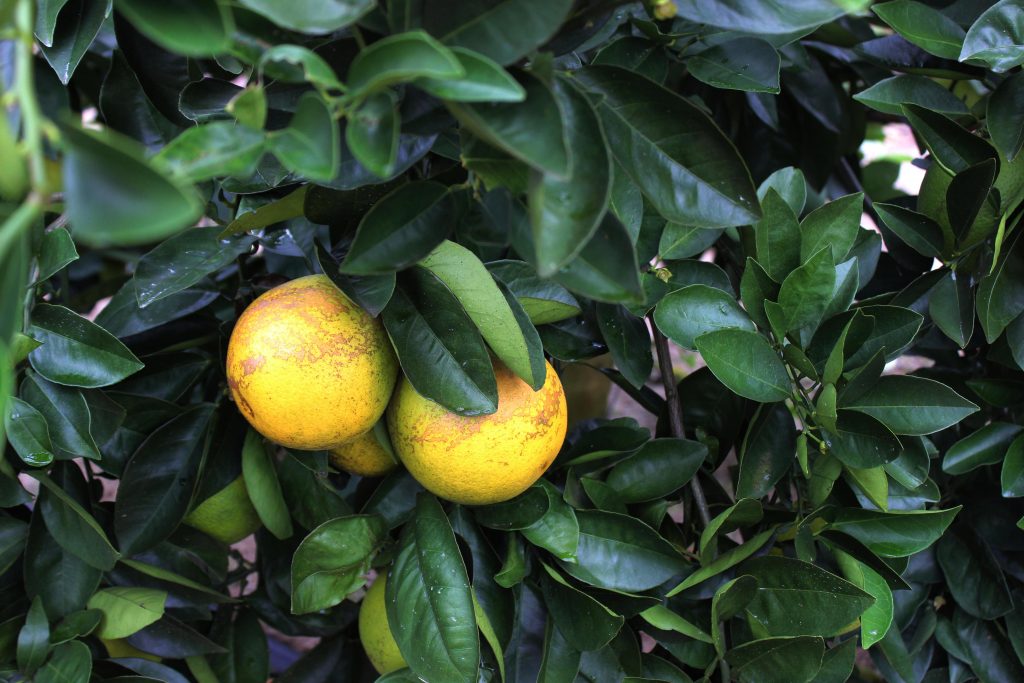
By Clint Thompson
The citrus greening disease that has decimated Florida citrus production has one University of Georgia (UGA) assistant professor and small fruits pathologist concerned about its potential impact in Georgia. Jonathan Oliver encourages Georgia producers to quickly dispose of infected trees if any are found.
“Really, it’s important that before we get very much greening or very much populations of the (Asian citrus) psyllid established here in Georgia that we stop it before it starts. Once it becomes really widespread and established in a lot of our trees, it’s really hard to stop it,” Oliver said. “It’s really important that when growers find out they have an infected tree to promptly remove that tree. They need to keep it from being a source of continued spread. When they find out they have any populations of the psyllid in their area or in their planting, they need to apply appropriate insecticides to neutralize that population wherever they can find it.”
Georgia citrus has largely avoided the greening disease despite its spike in production to 2,700 acres. Oliver said 14 trees have been found to have the disease, 12 of which are homeowner trees. However, two commercial trees were diagnosed with the disease in the past year.
“That’s a big concern to citrus growers knowing the experience in Florida, 70% decline in citrus production over the last 15 years in commercial citrus. We don’t want that to cause problems for our growers here,” Oliver said.
What is Citrus Greening?
According to UF/IFAS, citrus greening, also known as Huanglongbing or HLB, affects citrus production across the globe. Symptoms include asymmetrical yellowing of the leaves and leaf veins. Later symptoms include twig dieback and decreased yields. Fruit is often small, lopsided and not marketable. Fruit drop can also occur as a result.
There are no resistant cultivars currently available. Insecticides can reduce the spread but not enough to prevent the spread as observed in Florida and Brazil.
“Florida has had a horrible experience with it over the last 15 years. What happens is, once the plant becomes infected with the bacteria that causes it, nothing can be done about the disease. The tree is just going to decline and eventually become unproductive and die,” Oliver said.
“Unfortunately, the symptoms don’t always appear immediately. The tree can be infected for a year or two before you see any symptoms. In the meantime, the bacteria, which is spread by an insect, can be moved around from tree to tree. If you have greening there, it can be really hard to get rid of, because often it’ll be in places you don’t even know. If you find it in one spot, it’ll be in several places, kind of like cockroaches. You find three cockroaches in your house, you probably have a million cockroaches in your house.”









